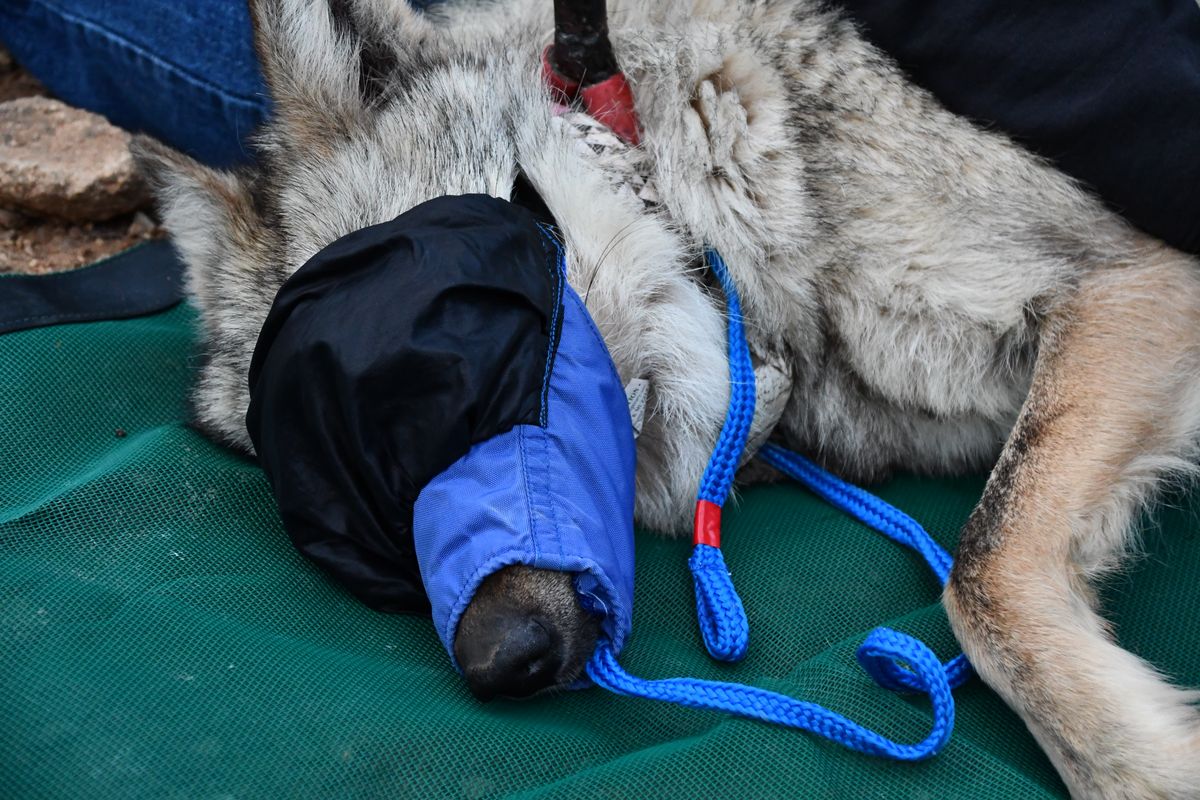Captured wild Mexican wolf released in Arizona

From staff reports
Federal wildlife officials announced this week that they had successfully relocated a well-known female Mexican wolf in Arizona. It was captured in January after it had crossed an interstate and out of a designated population area.
The capture and relocation of the wolf, known as Asha, has prompted criticism from several wildlife advocate organizations.
The female wolf, identified by its number 2754, was captured in northern New Mexico in January and held several months at the U.S. Fish and Wildlife Service’s Sevilleta Mexican Wolf Management facility near Socorro, New Mexico.
Born as part of the Rocky Prairie pack in Arizona in 2021, the wolf, which was fitted with a radio collar in 2022, dispersed from her family pack, traveled more than 500 miles and crossed out of the Mexican Wolf Experimental Population Area, according to a news release.
The Mexican Wolf Experimental Population Area generally is located south of Interstate 40 from Flagstaff, Arizona, at the northwest corner to east of Albuquerque, N.M., and south to the Mexican border.
Federal officials originally had planned to release the female wolf, her mate and their pups in Mexico to support recovery efforts to restore the wild wolves “where they could help provide a genetic boost to the U.S. wild population,” the release said.
Asha and her mate did not successfully breed and officials instead decided to release her alone in Arizona. That was completed on June 7.
“The decision to move this wolf back to the (wolf management area) at the time was consistent with policies outlined in the” agency’s recovery permit, the news release states.
“In addition, the lack of other wolves in the area meant there was no chance for female wolf 2754 to breed and contribute to Mexican wolf recovery.”
Cindi Tuell, the Arizona and New Mexico director of the Western Watersheds Project, criticized the capture of Asha for wandering over an arbitrary boundary.
“It’s scientifically indefensible and inherently unfair that wolves need to stay south of Interstate 40,” Tuell said. “Wolves like Asha have shown, time and time again, that this purely political boundary is ecologically irrelevant.”
Emily Renn, executive director of the Grand Canyon Wolf Recovery Project, also questioned why federal officials needed to intervene.
“The agencies responsible for Mexican wolf management need to acknowledge that dispersing long distances is an inherent natural behavior for many wolves and needs to be incorporated into their recovery,” she wrote.
Unlike the wolves that have recovered some of their territory in the Washington and other northern states, the Mexican gray wolves were nearly wiped out a century ago to bolster the livestock industry.
Between 1977 and 1980, the last known Mexican gray wolves were captured to save the subspecies from extinction. Seven wolves bred in captivity, but the low number of genetic founders continues to pose a threat, according to the news release.
Chris Smith, the southwest wildlife advocate for WildEarth Guardians, said Asha should never have been taken back into captivity after she wandered out of the designated wolf recovery area.
“Wolves should be allowed to roam where they will,” Smith said. “But it’s great to see Asha being released back into the wild where she belongs.”